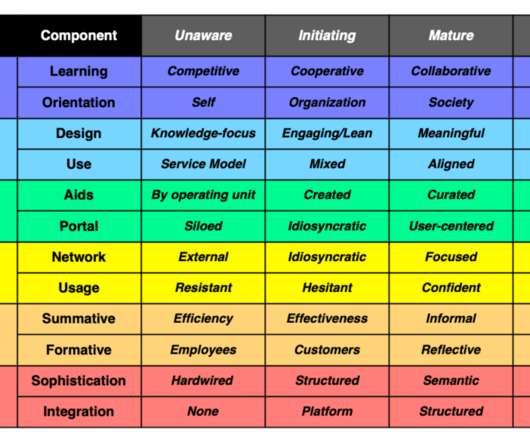Evaluating Informal Learning
The Performance Improvement Blog
JULY 24, 2013
Informal learning in organizations is finally being recognized as a key aspect of employee development and performance improvement. But how do you evaluate something that is as unpredictable and serendipitous as informal learning? Employee teams could post the progress and results of their projects on a Web site (e.g.,














































Let's personalize your content